Did you know that your insoles, which provide comfort and relief to your feet inside your shoes, also get dirty? Amazingly, they can get as dirty as the outsoles of your shoes due to sweat from your heels and dirt from the outside.
It will amaze you to know that having clean insoles is just as important as cleaning the body of a shoe.
Funny enough, it is easier to consider cleaning a shoe’s insoles when you can remove it and add it to their pile of laundry. However, with soles attached to the shoes themselves, cleaning them might seem too much to handle. This is because you might be confused as to what to use and how to go about with the cleaning.
Keep reading this article to discover the necessary things you would need and the steps to take to clean your non-removable insoles.
What Do You Need For Cleaning Non Removable Insoles?
Have you ever pulled off your shoes and noticed a change in the smell of the room you walked into? Have you had to gag when your face mistakenly came close to someone’s shoes?
Walking around with shoes whose insoles are dirty would not only make the shoes smell bad but can also make them spoil quickly. As such, it is important that you pay attention to your shoe’s insoles, as well as the body, especially if the insoles are non-removable.
Like with most things that require cleaning, only your hand cannot do the trick. You will need some other materials or tools in some cases. Some of the materials that you can use to clean non-removable insoles include:
- Clean, warm water
- Dry rag
- Toothbrush with soft bristles or a mild scrubbing brush
- Vinegar
- Dish soap or liquid detergent
- Alcohol
- Baking soda
- Spray bottle
Each can help you ensure that your non-removable insoles stay fresh and clean. You will need warm water if you are considering washing your insoles.
Using water to clean insoles is quite beneficial, especially when you wear the shoes regularly. Interestingly, washing your insoles with water can get messy depending on the material of the insoles. As a result, some people prefer to use other cleaning materials and alternatives besides water.
Next is the toothbrush with soft bristles or a mild scrubbing brush. Since you cannot bring out the insoles as they are attached to the shoe, a toothbrush or scrubbing brush will make your work easy.
It will help you reach into your shoe and scrub away dirt prints from the edges and corners of the insole. You can either use dish soap or liquid detergent, depending on the material of the insoles.
For alcohol, it will come in handy if you are considering cleaning your insoles without using soap. As we all know, alcohol is quite active in fighting germs and removing tough stains in materials.
The amazing part is that it also works with shoe insoles and effectively removes bad smells from your shoes. Vinegar and baking soda can also act as substitutes for alcohol since you do not need water to use them.
Interestingly, you will find these cleaning solutions more convenient if you wear shoes regularly, as they involve little moisture and can save time while removing dirt.
For the spray bottle, you would need it for cleaning non-removable insoles with alcohol and water. As the insoles cannot be removed, the spray bottle will help you get the alcohol solution to the corners of the insoles for proper cleaning.
Also, you will need the dry rag to wipe and clean off moisture before leaving them to dry, speeding up the drying process.
How to Clean Attached Insoles?
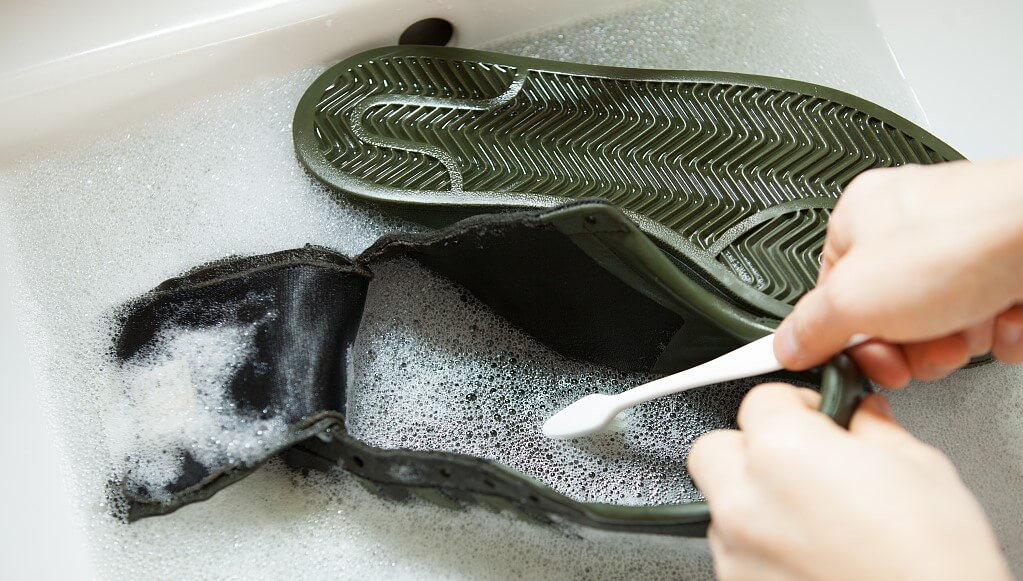
Usually, with removable insoles, taking them out and washing them is often the easiest way to get dirt out of them. However, things are slightly different with non-removable insoles.
While soap and water always work, you can also use other materials like vinegar, alcohol, and baking soda to remove ugly stains and leave your insoles smelling fresh.
However, before you start cleaning, be sure of the insole’s material, so you will know the kind of cleaning treatment it requires. Also, regardless of how dirty or how many stains the insoles have, you should be as gentle as possible.
Unlike removable insoles, which you can separate from the shoes, non-removable insoles are attached and cannot come out. So hand washing them is not possible.
Moving on to the cleaning process properly. As stated earlier, there are three major ways to clean non-removable insoles, each requiring specific materials.
The first way:
You would need a bowl of warm water alongside soap and a scrubbing brush when washing non-removable insoles. You could use either dish bar soap or liquid detergent. If you want to save time, try using liquid detergent with a scrubbing brush.
The first places to concentrate on are the toe and heel areas, as stains here are quite visible. Then, go on to rub the brush all over the insole’s surface area gently and slowly. Also, you should allow the soap to spread well on the surface to remove stubborn dirt and stains.
You should scrub the entire surface three to four times to ensure that all the stains have been removed. Once this is over, go on to rinse the insoles thoroughly using the brush which you should have already rinsed.
For most people, this is the part they dread, especially when their shoes are made of light material. The trick here, however, is to use only the right quantity of water needed to rinse off the soap residue inside the shoe.
If doing this looks too hard, try cleaning the insoles with a dry rag instead of rinsing them with water.
The Second Way:
Another simple way to keep germs and dirt away from your non-removable insoles is by spraying them with alcohol and water.
Although it may seem simple, this method requires carefulness that not everyone can muster.
First, make sure you mix the alcohol and water equally. You can get measuring cups to help you do this well, so the measurement is accurate.
After you are sure of the measurements and the mixture, pour it gently into a spray bottle and be careful not to spill too many drops. Then to the spraying proper, which is where the major work is.
You should remember that the edges, heel, and toe corners are the parts of the insoles that store up the most dirt, so you should target these areas. Remarkably with this method, you will because the alcohol solution will evaporate quickly.
The Third Way:
In addition, you can consider using some items in the kitchen for show cleaning. Such as using baking soda to clean non-removable insoles and give them a fresh smell.
This method is perfect for shoes with delicate insoles as it involves less pressure. All you need to do is to pour some baking soda into your shoes and allow it to stay for long hours.
The only downside to this method is that baking soda effectively removes bad odors but will leave some stains behind. So instead of doing nothing while the baking soda is in your shoe, you can scrub the insole’s surface lightly.
By doing this, you can clear away some stains and still keep your shoes smelling fresh. Also, remember to dust your shoe before wearing it after cleaning it with baking soda.
For each of these methods, you should always leave your shoes to dry afterward before wearing or storing them. Moreover, when cleaning non-removable insoles, try to be as gentle as possible by considering the material used in making the insole.
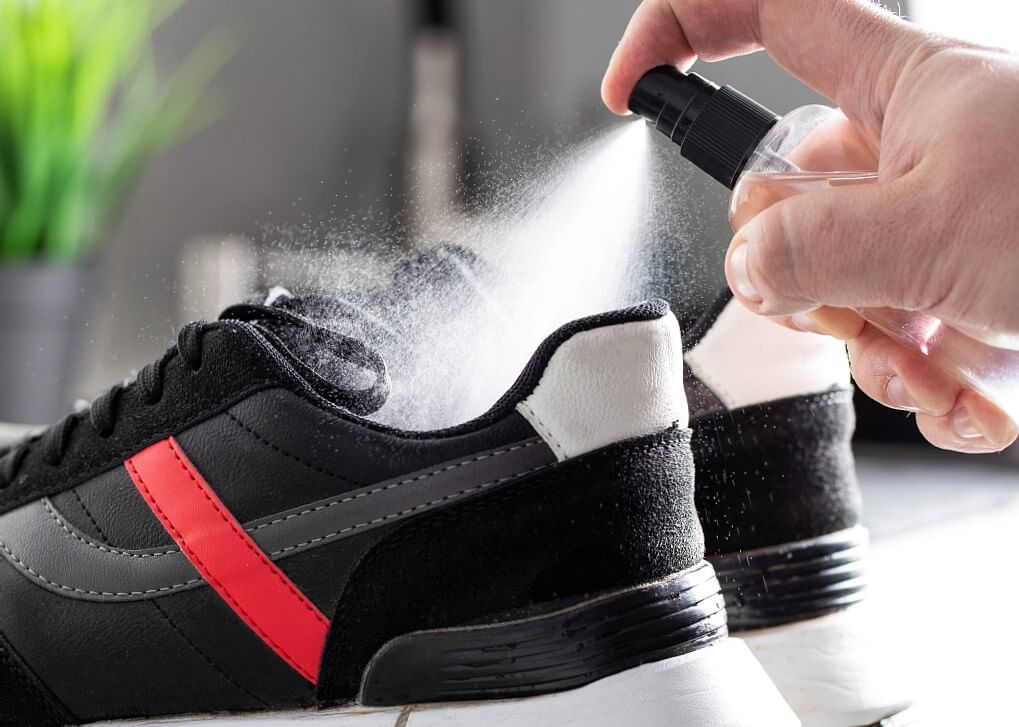
Additional Tips And Tricks
Use vinegar
If you are not comfortable with alcohol and washing, you can use vinegar to keep your non-removable insoles clean. To use vinegar, pour a few drops into your shoe and leave them for a while.
You should leave your shoes for long as the vinegar gets more active the longer it stays in the shoe. However, remember to air your shoe properly after cleaning it this way to remove the smell of vinegar.
Wear Socks
Also, if you wear shoes regularly, ensure you wear them with socks. They can help your insoles stay fresh. It would help if you also aired your shoes after wearing them before storing them.
Fill With Charcoal
As an extra tip, you can fill your shoes with charcoal as it helps absorb moisture and strong smells that may linger after cleaning or wearing. Remember always to store your shoes in a well-ventilated place and ensure that your closet is not stuffy.
Conclusion
Everyone loves wearing shoes that look and smell good. It makes you even more attractive and approachable. So you should make cleaning the insoles of your shoes a part of your daily or weekly routine.
More importantly, cleaning your non-removable insoles doesn’t have to be tiring or messy. You only need to apply the above solutions for stress-free cleaning time.
So whichever method or materials you choose, cleaning your non-removable insoles regularly will help you enjoy your shoes for longer.


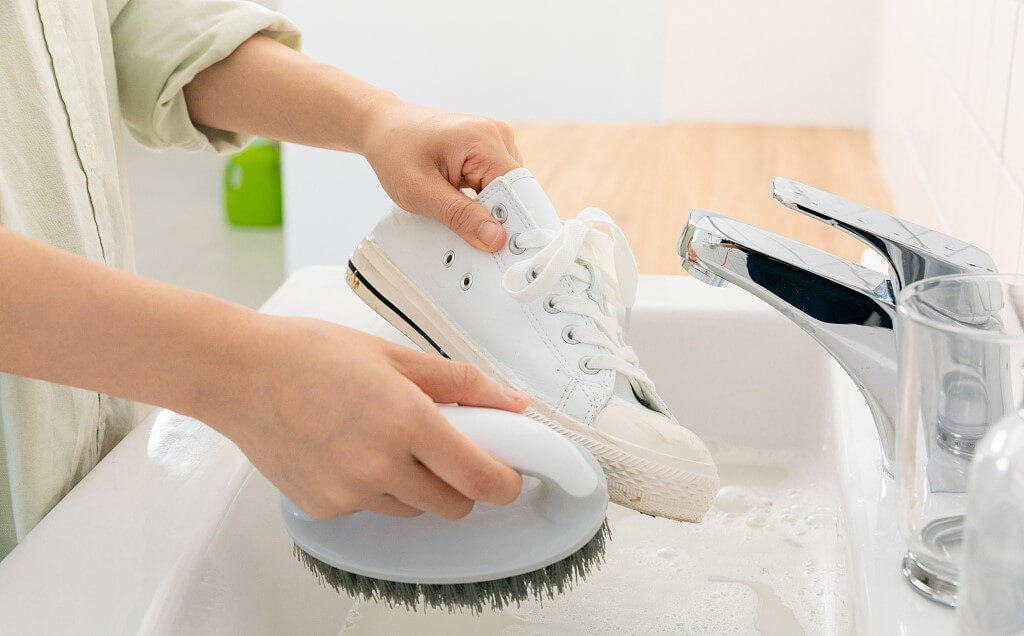










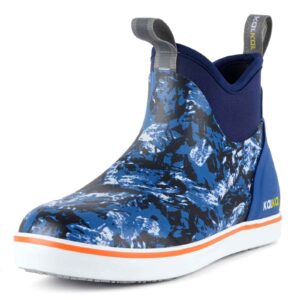
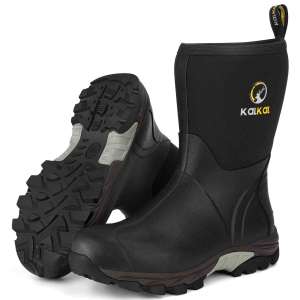




Leave a reply